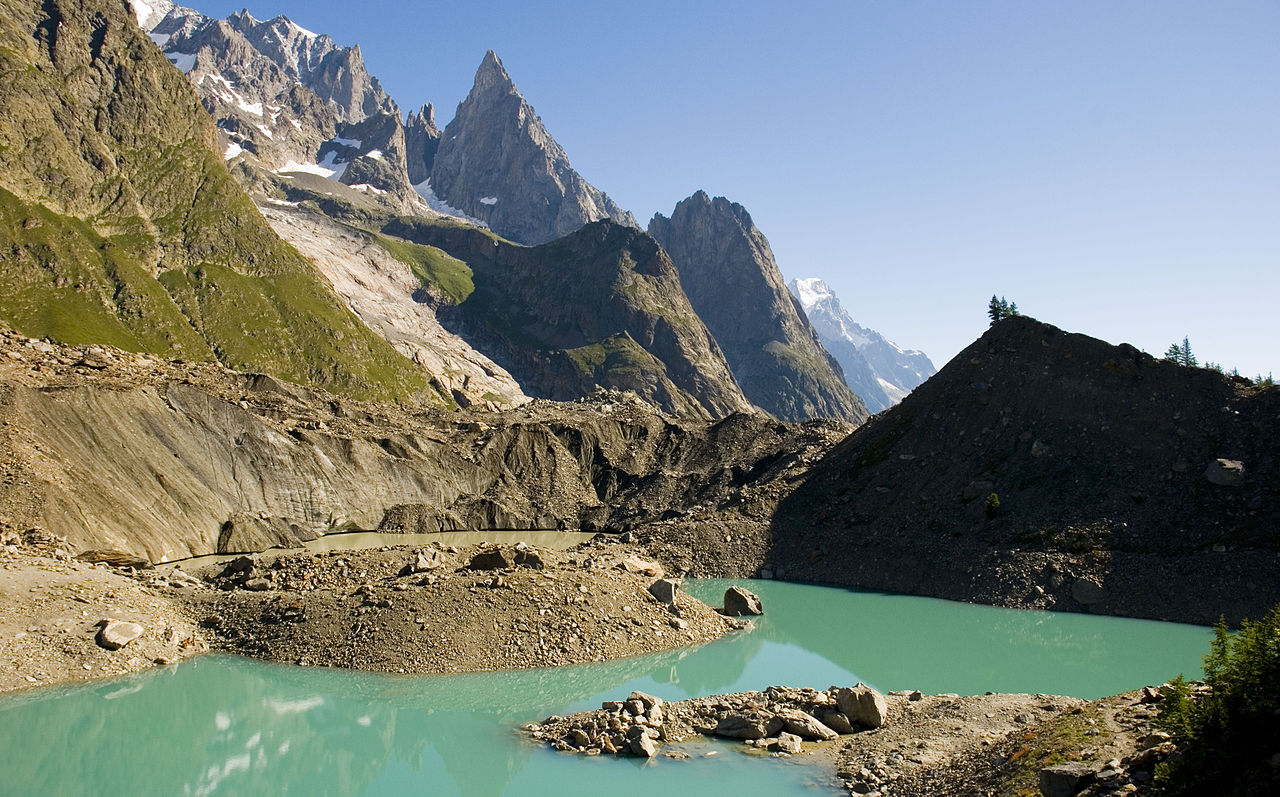Rest at the foot of the homonymous glacier a suggestive body of water. Able to amaze us with his shades of color. But also to take us by surprise when, visiting it at different times of the year, we find it "emptied". At an altitude of 2000 meters above sea level, Lake Miage spends its life. Ready to welcome, in its silent action, tourists who enliven the quiet Valle d'Aosta paths.
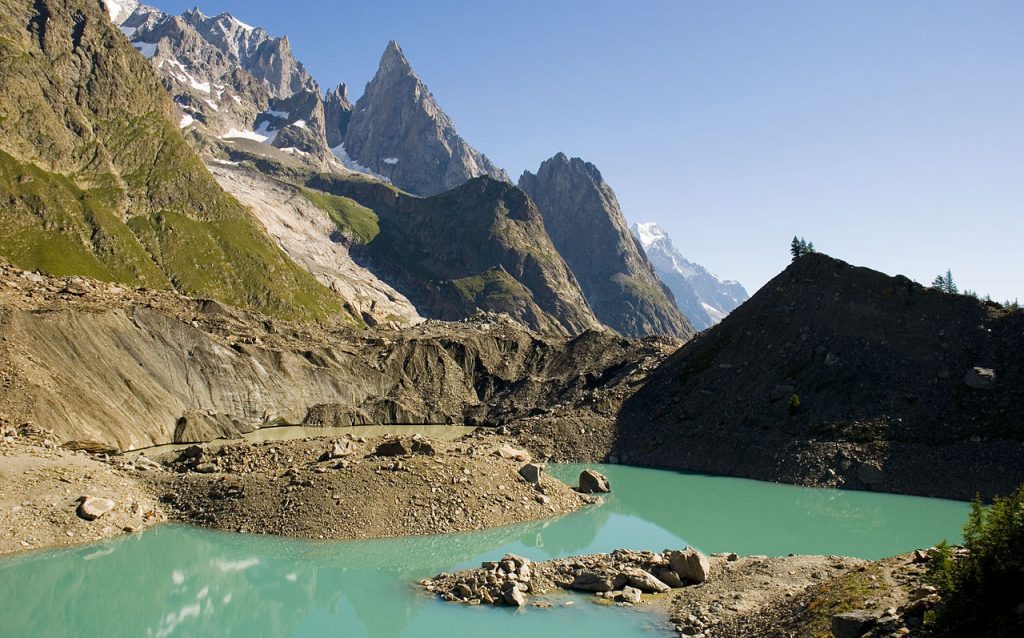
Lago del Miage: man's observations
The singularity of this protagonist of nature has been the subject of numerous observations. As recently as in the past. Man has captured its peculiar "behaviors" over time. The small basin is located at the foot of the Mont Blanc. Child of the glacier di Val Veny it inevitably suffers the consequences. And so Lake Miage becomes the stage for spectacular action. What first actor sees the same glacier. Manufacturer of iceberg where it comes into contact with water. Here then begins the exhibition of the glacial blocks. When spring arrives, the Miage lake comes alive. Icy fragments navigate, attracting the gaze of visitors.
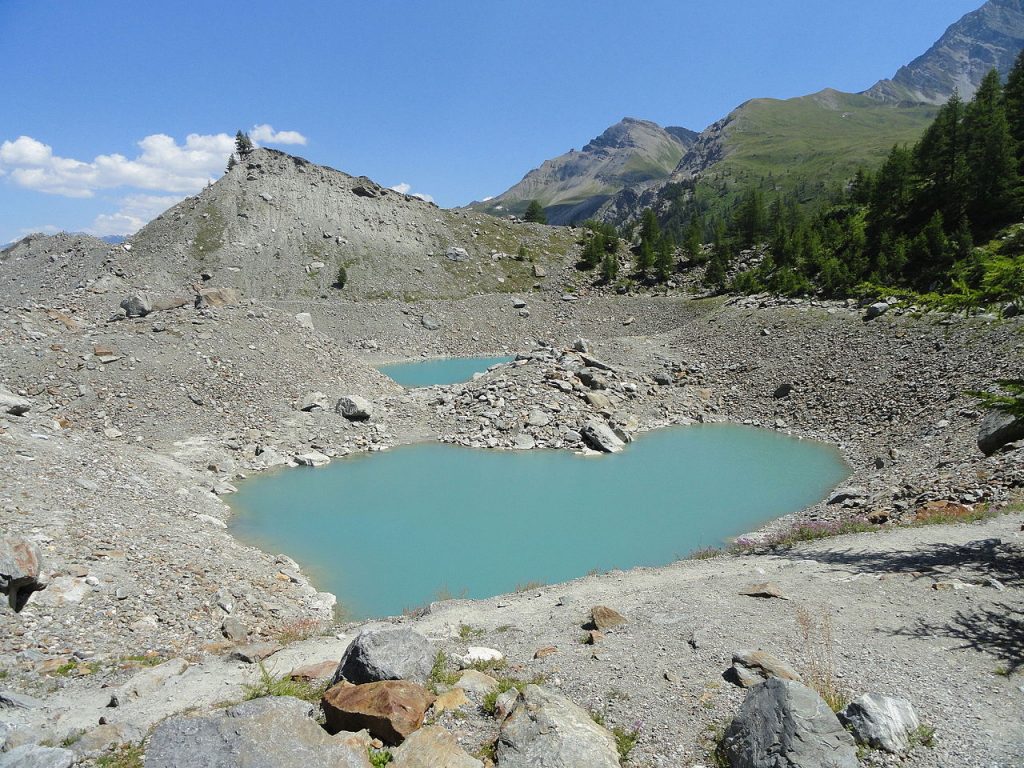
But that is not all. Something else has aroused human interest. Observing the place at different times of the year the scenery changes. Passing from a basin full of water to an almost empty one. A phenomenon that prompted the observations of various intellectuals of the past. From the scholars of the subject to the painters. In fact, it seems that at the end of the 800th century these changes were the subject of artistic representation. At the head of all this there would be the glacier which, moreover, also constitutes half of the pavement of the lake. We are therefore faced with a basin that is partly epiglacial, partly in contact with the cliff.
Itineraries
The best season to visit Lake Miage varies according to what you want to observe. Perhaps, the ideal would be to hike at different times of the year. In order to have a complete picture of the changes affecting the pelvis. But let's see how to proceed to reach the area. Established itineraries recommend that you leave your car in the La Visaille car park. From this moment on, continue on foot, between paved roads and nature trails. You can immediately opt for one double solution. A road trip, also easy because it is closed to traffic. Or a shortcut to take at the turn of the first hairpin bend.
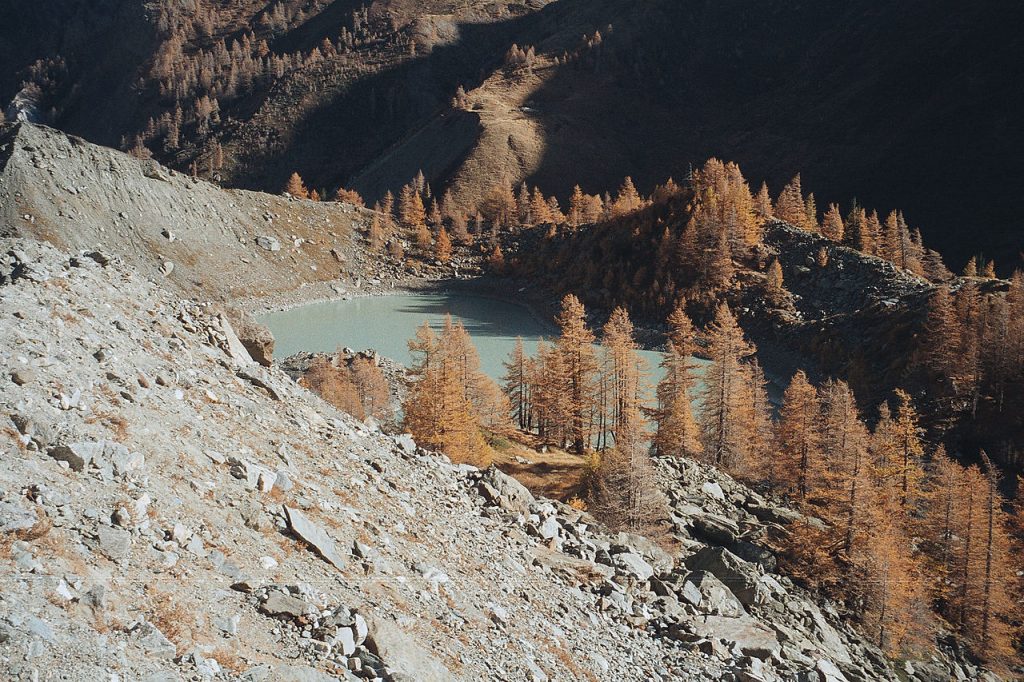
In this second case you will find yourself ad cross the coniferous forest whose needles act as a carpet for the walkway. A few minutes later you will come out again on the road on the sides of which dominate larch trees and some deciduous trees. At this point you can start enjoy the landscape around you. The steep and stony Morena del Miage on which the frozen river that originates from Mont Blanc moves. A watercourse that goes from more than 4000 meters to 1800 in La Visaille. And right here it melts, starting to feed the Miage stream.
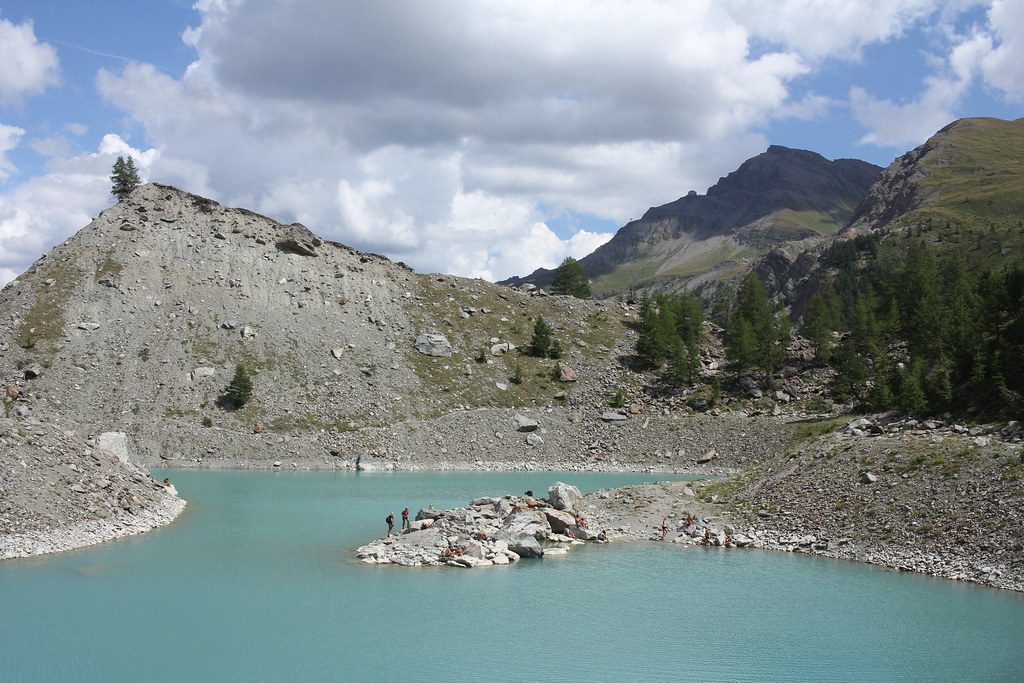
Continuing it is possible to observe the Limestone pyramids. Pyramid-shaped limestone formations clearly visible from Lake Combal. Proceed by ignoring the bridge and keeping to the right. Soon we find ourselves at a crossroads. We choose the indication "Val Combal”Where it will be possible to have a break at the bar of the same name. From this point the ascent towards Lake Miage begins. Just fifteen minutes and here the goal is reached. A path that becomes an opportunity to discover the territory. But also a way to observe the landscape from a philosophical perspective. I colors, the silence, the voice and the slow rhythm of nature.

